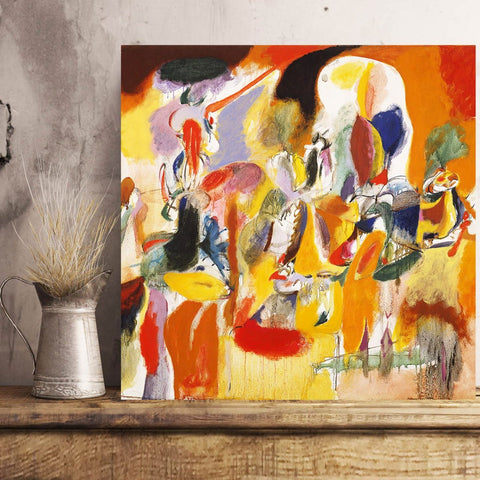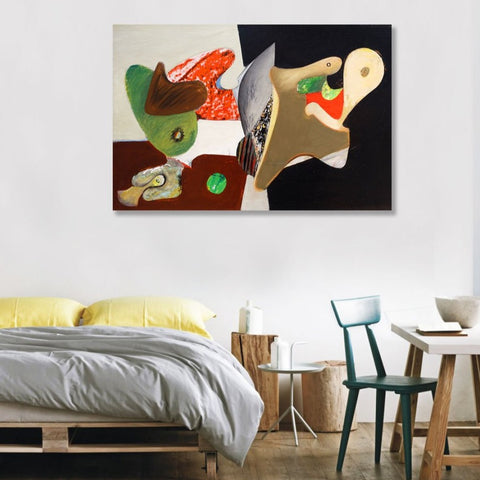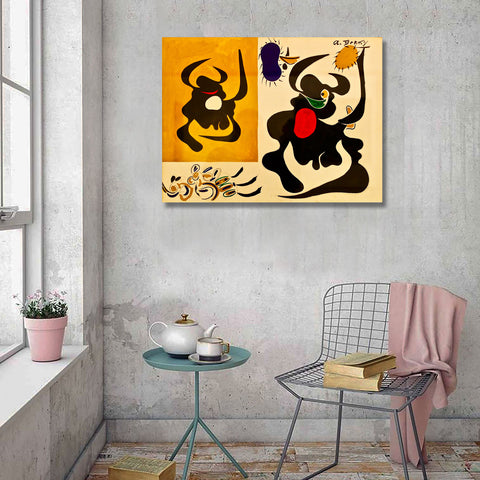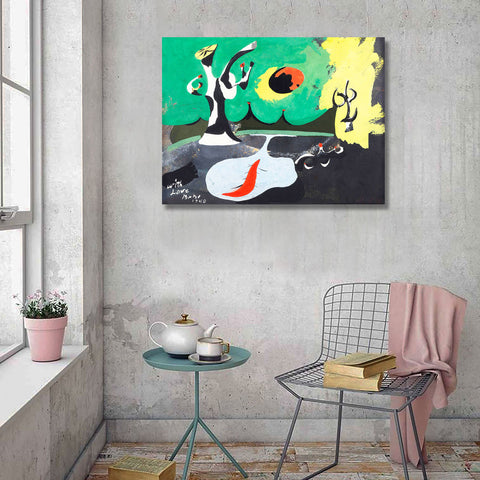Arshile GORKY

Arshile GORKY, Self-portrait.
Arshile GORKY (1904 –1948) was an Armenian-American abstract expressionist painter. He was born Vostanik Manoug Adoian on April 15, 1904, in the village of Khorgom, Ottoman Empire (modern-day Turkey), and died on July 21, 1948, in Sherman, Connecticut, United States.
Gorky emigrated to the United States in 1920 and became a key figure in the development of abstract expressionism, a major art movement that emerged in post-World War II America. He was heavily influenced by European modernist painters, such as Pablo Picasso and Joan Miró, as well as by American folk art and his own Armenian cultural heritage.
Gorky's work is characterized by its fluid, organic forms and use of rich, imaginative color. He was known for his ability to create a sense of depth and space through his use of biomorphic shapes and gestural brushstrokes.
Some of Gorky's most famous works include "The Artist and His Mother" (1926-1936), "Agony" (1947), and "The Liver Is the Cock's Comb" (1944). Despite his relatively short career, he remains one of the most important and influential abstract expressionist painters, and his works can be found in major art museums and private collections around the world.
Gorky's legacy continues to influence contemporary art, and he is widely regarded as one of the greatest artists of the 20th century. His contributions to the development of abstract expressionism have earned him a place in the pantheon of modern art.

Arshile GORKY, Self-portrait.
Arshile GORKY (1904 –1948) was an Armenian-American abstract expressionist painter. He was born Vostanik Manoug Adoian on April 15, 1904, in the village of Khorgom, Ottoman Empire (modern-day Turkey), and died on July 21, 1948, in Sherman, Connecticut, United States.
Gorky emigrated to the United States in 1920 and became a key figure in the development of abstract expressionism, a major art movement that emerged in post-World War II America. He was heavily influenced by European modernist painters, such as Pablo Picasso and Joan Miró, as well as by American folk art and his own Armenian cultural heritage.
Gorky's work is characterized by its fluid, organic forms and use of rich, imaginative color. He was known for his ability to create a sense of depth and space through his use of biomorphic shapes and gestural brushstrokes.
Some of Gorky's most famous works include "The Artist and His Mother" (1926-1936), "Agony" (1947), and "The Liver Is the Cock's Comb" (1944). Despite his relatively short career, he remains one of the most important and influential abstract expressionist painters, and his works can be found in major art museums and private collections around the world.
Gorky's legacy continues to influence contemporary art, and he is widely regarded as one of the greatest artists of the 20th century. His contributions to the development of abstract expressionism have earned him a place in the pantheon of modern art.











